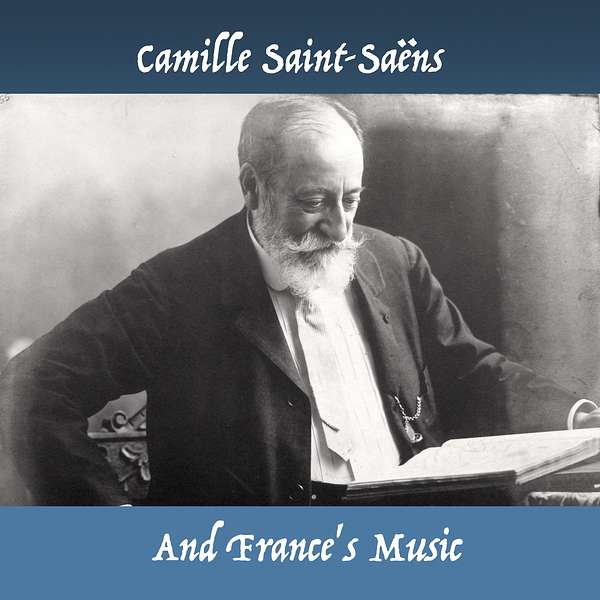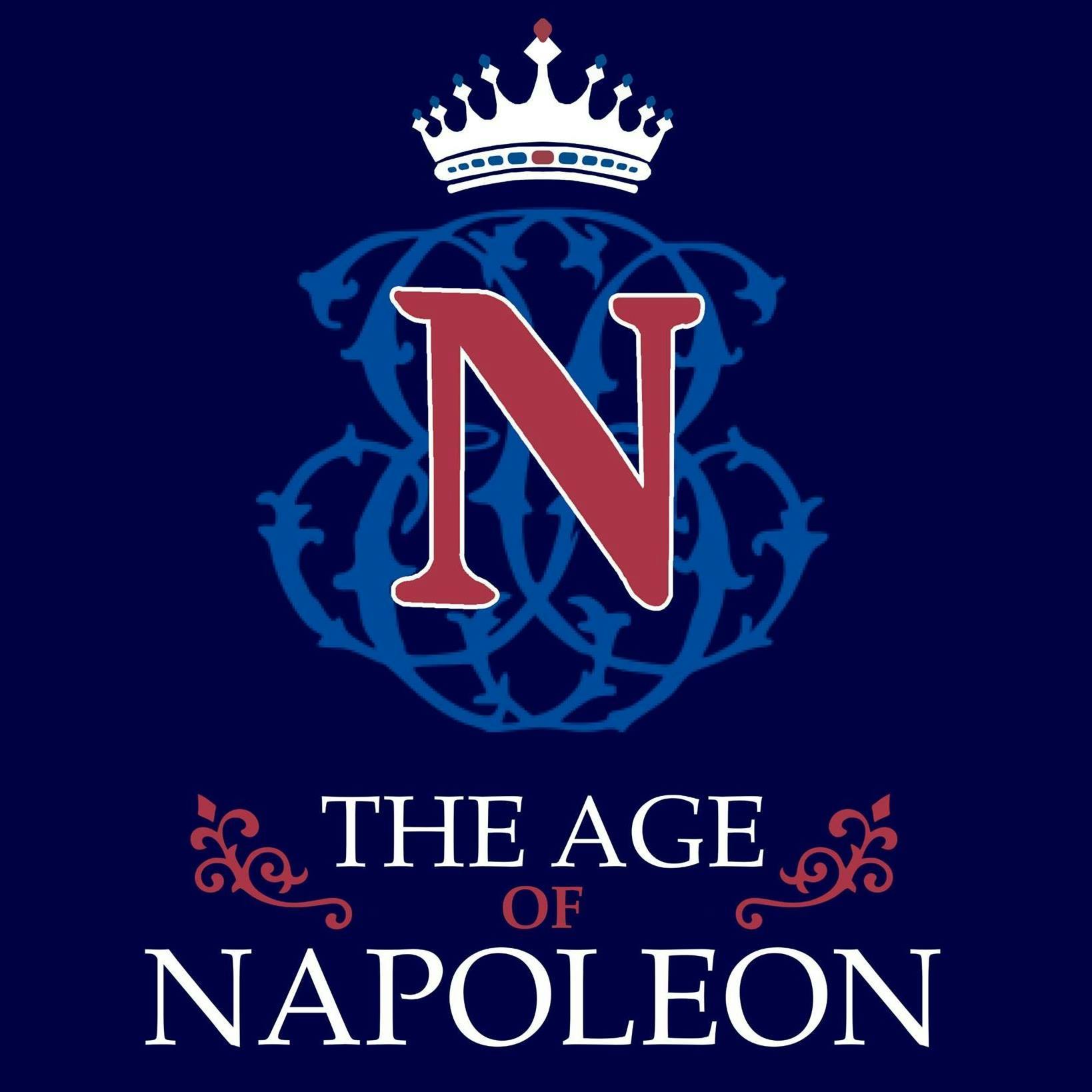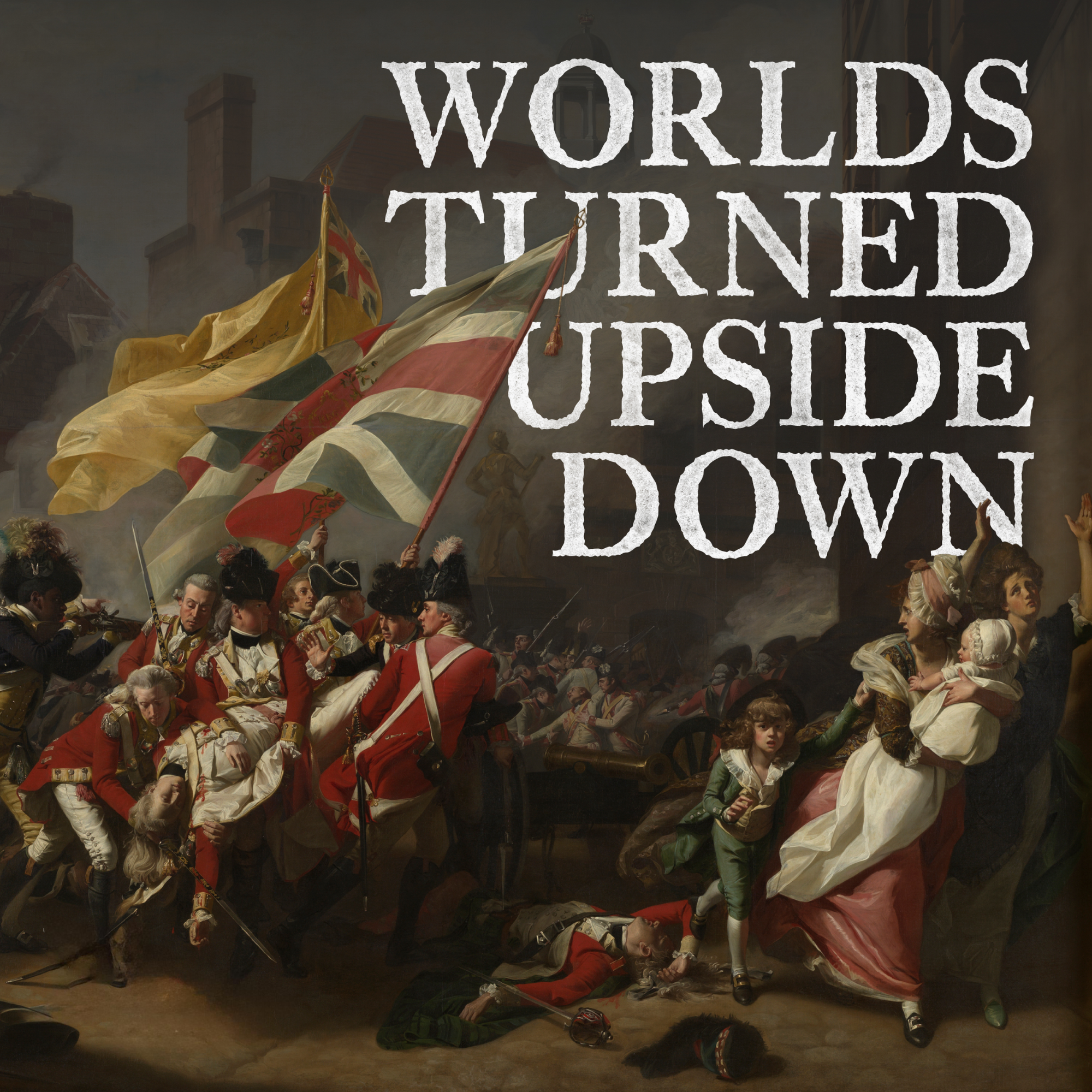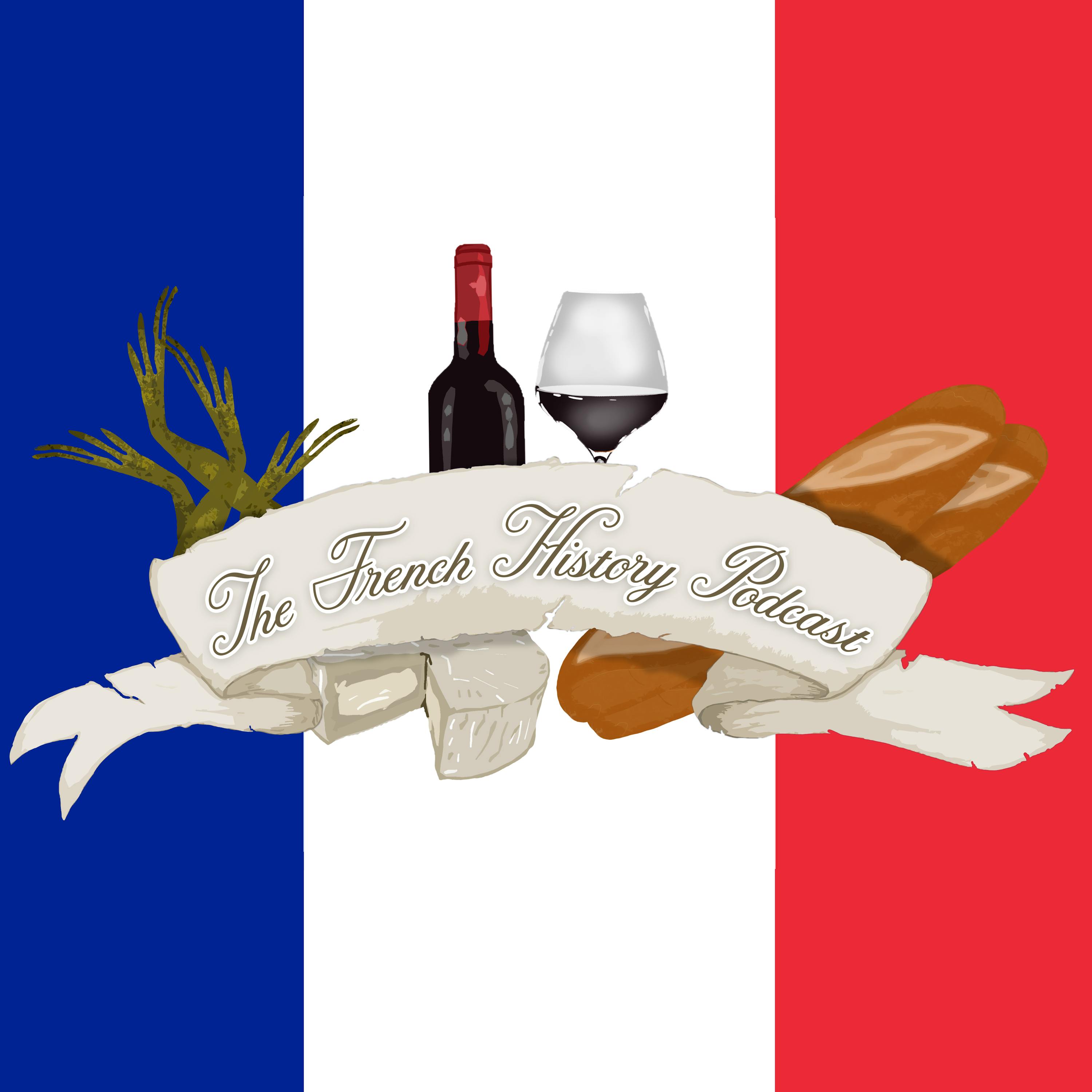
La Fayette, We Are Here!
La Fayette, We Are Here!
Camille Saint-Saëns and France's Music
We often see history as a succession of dates, events, wars and political machinations. But we should not forget that history is also forged by culture and by art. Art reflects society's values and aspirations, but also helps create them and move people forward. It also elevates us and makes us better in many ways.
Among the many art forms available to us, music is the one that transports us with the greatest strength. It surrounds us, lifts us and takes us to places we didn't know existed. Oh, literature and paintings can do that too, but music is special. It is unique as it can be savoured with our eyes closed.
Let's meet Camille Saint-Saëns and France's music!
Introduction
04:33 - A Young Prodigy
12:28 - The Remarkable Organist & Pianist
19:17 - World Famous Composer
32:13 - Conclusion
Music: Marche pour la cérémonie des Turcs, composed by Jean-Baptiste Lully, arranged and performed by Jérôme Arfouche.
Musical excerpts (in order):
Finale - Carnival of the Animals, R. 125
Reach out, support the show and give me feedback!
What do a swan, an aquarium and pianists have in common? This mélange of names may seem ludicrous at first, although you'll find that it is not. What they do have in common, is that they have been put into music by one of the greatest composers of the Nineteenth century.
We often see history as a succession of dates, events, wars and political machinations. But we should not forget that history is also forged by culture and by art. Art reflects society's values and aspirations, but also helps create them and move people forward. It also elevates us and makes us better in many ways.
Among the many art forms available to us, music is the one that transports us with the greatest strength. It surrounds us, lifts us and takes us to places we didn't know existed. Oh, literature and paintings can do that too, but music is special. It is unique as it can be savoured with our eyes closed.
In fact, dear listeners, I recommend you close your eyes for a few seconds. As together, we will enter a carnival of remarkable achievements. Let's meet Camille Saint-Saëns and France's music!
Welcome, to La Fayette We are here!, the French history podcast, by a Frenchman. I am your host, Emmanuel Dubois, and today, about music composer Camille Saint-Saëns, who lived from 1835 to 1921. He is probably my favourite French composer, and it is a joy to talk about his art with you.
Before I proceed, I have some housekeeping to do for the podcast. As you have noticed, I wasn't able to publish an episode last month. I apologize for that, but many things in real life happened together in February and March and I couldn't find the time to work on the podcast. Each episode requires many hours to research, write, record, edit and publish, and I don't want to deliver a half-baked work. It's either a proper episode or nothing for me, as I am sure you understand and appreciate.
I also want to say that Google has decided that the Google Podcasts application was not any good anymore and they have decided to move everything to YouTube. I have made the update, so you can now find the podcast on YouTube and YouTube Music, should you wish to. Lastly, a small disclaimer for today's episode: the musical excerpts all come from the Internet Archive,
Now that that's taken care of, let's head back to France and talk about music!
As I have stated, our subject for today is Camille Saint-Saëns, and I'm sure many of you are not familiar with him. When you think of French composers you might know Berlioz, Debussy or Bizet, but Saint-Saëns is less known, especially outside of France. It is a shame, as he's had a huge impact on French music for decades. He even made his mark in cinema, being the first established composer to write the original score for a movie in 1908. Of course, this episode will be punctuated by musical excerpts. So put on your headphones, relax and enjoy the show.
A Young Prodigy
This was an excerpt from Saint-Saëns' Phaeton piece. Camille is born in Paris in 1835. Louis-Philippe is king since 1830, and the city is still reeling from the 1830 Revolution, but things are looking up. France is experiencing a prolonged period of peace after the devastation of the Napoleonic wars and the combats of 1830. Camille's family is not rich, but prosperous, his father being an official in the Ministry of the Interior. However, tragedy strikes and Joseph Victor, Camille's father, dies of tuberculosis when Camille is only an infant. After being taken to the country to preserve his health, little Camille is brought back to Paris to live with his mother, Françoise-Clémence and his great-aunt, Charlotte. Charlotte will be the one who will initiate Camille to music. Very quickly, she'll discover that her great-nephew has an immense talent.
When one thinks of a young boy bursting with musicality, one thinks of Wolfgang Amadeus Mozart. His exploits are well known, he was performing before the emperors and kings of Europe at age five, impressing everybody. Nobody had ever seen such raw talent in a child before, nor after. Until Camille Saint-Saëns. His contemporaries were baffled by the ease with which he learned to play the piano at age three to five. He demonstrated having absolute pitch as a toddler, a rare feat. Charlotte hired the great pianist Camille-Marie Stamaty to teach him when he was seven years old, after teaching him herself for four years. Stamaty confirmed the boy's enormous talent and started the lessons with him. Also very important, little Camille's mother and great-aunt made the important decision of not showing him to the world at this early age. Charlotte was persuaded that being a child prodigy on the world's stage had been detrimental to Mozart's health in the long term, and I think she was perfectly right, at least for his mental health. Therefore, it was decided that Camille would learn, but not perform outside of private circles until his teens.
Stamaty proved the ideal teacher for Camille, even though he will criticize him in later life. Very strict and old fashioned, he nevertheless taught the boy to respect the piano and drilled into him a precision of touch that few pianists in the world could ever attained. As an example, he made Camille play with his forearms resting on a bar in front of the keyboard, to make him use his hands more and his arms less, the energy coming from his fingers. It proved very effective, even though it was very trying for the young boy. In later years, audiences would be bewildered by Saint-Saëns' virtuosity, his hands seemingly flying over the keyboard, while his arms remained perfectly straight. A sight that twentieth century audiences would see again in the likes of Vladimir Horowitz, but I digress.
Camille would give concerts in private audiences from age five onward, but as I said, his mother and great-aunt were very protective of him. His education was not only in music, however, and Camille proved a remarkable student in pretty much every field of study. As a child of the Parisian bourgeoisie, he had access to the best schools in France and was instructed in French literature, Greek, Latin, mathematics, etc. He even excelled at science, especially astronomy, a passion that he will retain his whole life. He seems like a "Jack of all trades, master of all" in some sort. An abnormality, a boy almost too skilled and too smart.
At the age of eleven, he finally gave his first public concert, at the Salle Pleyel, in Paris. Imagine yourself in his shoes. A ten year old, used to playing in front of family members and friends, was now on a stage in front of 2,000 people, mostly strangers. And they're here to judge him, he knows that. They want to enjoy the music, sure, but they have heard of that great prodigy and they want to make sure the stories are true. Is little Camille that extraordinary? Can he really perform musical pieces that no ten year old should normally be able to even touch? On May 6th, 1846, Camille performs Mozart's Piano Concerto in B flat K450, and Beethoven's Third Piano Concerto. It's a triumph. But Saint-Saëns will prove more than a brilliant pianist, he's also a remarkable composer, a creator of music. Seeing this, Stamaty introduces him to Pierre Maleden, a composer and music theoretician, to learn composition; and to Alexandre Boëly, a remarkable organist. This will be a revelation, as Saint-Saëns will prove as agile with the organ as with the piano. He will quickly learn many highly complicated pieces, including some by a German composer that was relatively forgotten at the time: Johan Sebastian Bach.
This remarkable education will culminate in 1848 when he enters the Conservatoire de Paris, the top musical school in France. It was formerly known as the Académie royale de musique, created by a certain king Louis XIV. I encourage you to listen to my July 2022 episode on the Sun King to learn more about his reign. At the Conservatoire, young Camille joins the organ class, being taught by François Benoist, known for his improvisation qualities. He also has Fromental Halévy as a teacher for musical composition, as well as Charles Gounod as an instructor. These two men are especially known for their operas, but they also teach Camille the importance of symphonic music and chamber music, styles that were much less popular in France in the mid Nineteenth century. Camille completes his studies in 1851 and is top of his class in organ. Having being taught by his family and French master composers and interprets, he was now eighteen years old and ready to take on the world, one note at a time.
The Remarkable Organist & pianist
This excerpt from Saint-Saëns's fourth movement of his third symphony exemplifies what he will become. A remarkable composer, whilst remanning a virtuoso pianist and organist. Marrying instruments that were rarely heard together, to absolutely extraordinary effect. But before we get to that, let's talk about Saint-Saëns' early professional career.
His first position is as organist for the Saint-Merri church, a sixteenth century catholic church located in Paris's fourth arrondissement. Its organ was built in the mid seventeenth century and augmented in 1779. Saint-Saëns performs regularly there until he's offered an even better position, four years later, at the Église de la Madeleine, a neoclassic church completed in 1842, after over thirty years of construction. Its great organ was built by Aristide Cavaillé-Coll, the most renown organ builder of the century. When Saint-Saëns arrives at La Madeleine in 1857, the instrument is sparkling and daunting. It's definitely one of the most impressive instruments available to any musician in the world and Saint-Saëns will remain the church's organist for the next two decades, his successors always being judged to his exacting standards. Also, at the time, La Madeleine is the official church of the French Empire, with emperor Napoléon III often attending.
When Saint-Saëns reaches the age of 25, he's already famous in the whole of Europe. Renown composers such as the German Hans von Bülow, the Hungarian Franz Listz or the French Hector Berlioz, express their admiration for Saint-Saëns' virtuosity, musical qualities and improvisation skills. Berlioz is especially captivated by the young Saint-Saëns. He's 32 years older than him and says this remarkable sentence about the young man, quote: "This young man knows everything, but he terribly lacks inexperience", end quote. You heard that right, he was lacking "inexperience". Saint-Saëns was a musical UFO, an oddity, to such a level that even the best musicians of his time weren't sure what to make of him. As I've stated, musicians and musicologist have compared him to Mozart. The more we learn about him, the more this statement makes sense.
Saint-Saëns was not only performing for the French ruling class, he was also writing music since the age of 6. He first adapts texts of La Fontaine or Alfred de Musset into music, and even a poem by Charles d'Orléans, a duke from the 15th century. He then proceeds into sacred music, with canticles and cantatas for the church. Although obviously gifted and a hard worker, Saint-Saëns is still honing his skills as a composer in the 1840s and 50s. He favours piano, organ and orchestral music, although he will touch at everything, including the most popular genre of the century: opera. But during his twenties, Saint-Saëns is doing a bit of everything, including new editions of works by Mozart, Beethoven and others. He also helps Richard Wagner get some recognition in France, as he was snubbed by the French at the time. Funnily enough, Saint-Saëns explained that he would never be a follower of Wagner's, but that he admired his works nonetheless.
Saint-Saëns is totally absorbed by his work. He has little to no romantic life and his circle of friends revolves almost exclusively around music. In 1861, he becomes a piano teacher at the Niedermeyer school of music, specialized in catholic sacred music. Among his pupils are Gabriel Fauré and André Messager, two future great names of French music. He'll stay there until 1865. During this time period, he works on his own compositions as well as a series of adaptations, including sonatas and cantatas by Johan Sebastian Bach, adapted to the piano. All these are absolutely beautiful, and perfectly adapted.
He obtains further recognition in 1867, at the Paris Exposition. There, his cantata Les Noces de Prométhée, earns the first prize. The jury is extremely impressive, with members such as Gounod, Berlioz, Verdi and Rossini. He's also working on a big project that will take him several years, a grand opera on the Biblical tale of Samson and Delilah. Many of his contemporaries frown upon the scale of the endeavour, but Saint-Saëns will work on it for the next decade, undeterred by early doubts. That being said, Franz Liszt supports Saint-Saëns in his endeavour and tells him that he'd bring his work to Germany, no matter what.
However, fate would not leave Saint-Saëns or France alone to create and enjoy art. If artists from every country in Europe could cooperate without any afterthought, geopolitics were far from being as benign. Saint-Saëns later said quote: "If art has no homeland, artists have one." Never was that statement more true than in 1870, when France declared war on Prussia and Saint-Saëns himself joined the national guard.
World Famous Composer
Saint-Saëns composed his Danse macabre between 1872 and 1874, undoubtedly marked by the Franco-Prussian war, the Commune and all the terrible events that scarred France during this period. Himself a Republican, Saint-Saëns had to be careful during these violent and scary moments. He even has to flee Paris for London with other musicians, including Charles Gounod, fearing for his life. But after things calmed down, he could concentrate on his musical endeavours once again.
Saint-Saëns is truly transformed by the war and the civil war that ensued. He believes that France as a nation needs unity and that artists can be part of the solution to that problem. To that effect, he creates the Société nationale de musique, or National Society of Music with poet and singer Romain Bussine. The society's motto is Ars Gallica, or "French art" in Latin. Saint-Saëns is now a ardent patriot, one who wants to defend French music and arts within and without France. He talks about it on the stage but also in French newspapers. While he'd been relatively quiet on the subject before 1870, he was now quite vocal about it. He firmly believed that French music had been overshadowed by German and Italian music during the previous decades and centuries and that it was his duty, along with fellow artists, to promote it. One key aspect of that was that French music was indeed, different from the others. Germans and Italians of the Nineteenth century favoured opera as a way to tell a story through text, acting and music. Indeed, Saint-Saëns himself wrote operas and his great opera Samson and Delilah would premiere in 1877. But France's musical originality was to be found elsewhere, in orchestral and chamber music. Along with romanticists writers, Saint-Saëns will reinforce romantic music. Without knowing it, he helped create modern orchestration and styles that will deeply influence a new form of musical creation in the twentieth century: film scores.
Saint-Saëns is actually jumping back in time, promoting concertos, symphonies and chamber music, all genres that were very popular in the seventeen and eighteenth centuries. By doing so, he's also paving the way for future great French composers such as Maurice Ravel and Claude Debussy. Saint-Saëns was creating beautiful music and inspiring others to do the same, but he was also doing it in a distinctly French way. He was not trying to emulate what was being done in Germany, like many others were, he was trying to find France's voice on the world stage.
On a personal level, Saint-Saëns was having a terrible time. His great-aunt, his first musical teacher, died in 1872, to his great chagrin. He married in 1875, aged 40, quite late by the standards of the time, to a very young woman, Marie-Laure Truffot, an industrialist's daughter. The marriage is not a good one. Saint-Saëns is much more interested in his work than in his marital life. Plus, the couple suffers two tragedies. Their first born, André, falls to his death from their Parisian apartment's balcony when he's two years old. Saint-Saëns blames poor Marie-Laure for the accident, and the couple is in a very bad way. Just a little while later, their second son, Jean-François, dies of pneumonia. After 1881, the couple is barely ever seen together again. They'll never divorce though, and Saint-Saëns would never have another stable romantic relationship. If Saint-Saëns' career was a great success, his private life was a disaster.
Saint-Saëns is the first French composer to try his hand at the symphonic poem. A relatively new genre of music pushed by his friend Franz Liszt. The Danse Macabre is one of those, but he will write many more, such as Le Rouet d'Omphale, Phaéton or La Jeunesse d'Hercule. Saint-Saëns performs his creations all over Europe in front of the most demanding audiences. He performs at Windsor in 1880, before Queen Victoria, who is amazed by his performance at the organ. Indeed, after 1880, Saint-Saëns' career was reaching new heights all over the world.
He's recognized as one of France's leading artists and intellectual, becoming a member of the Académie des beaux-arts in 1881 and an Officier de la Legion d'honneur in 1884. This is when Saint-Saëns his working on two of his most impressive works, both released in 1886. They are remarkable for many reasons, one of them being how different they are. One is a symphony, his third. It is popularly known as the "Organ Symphony". Listen.
And of course, he follows that with his marvellous Carnaval des animaux, or Carnival of the animals. Intended as something funny for a Mardi gras, it is in effect a remarkable œuvre, one that demonstrates the great skill of its creator.
In it, we are exposed to all sorts of animals, ranging from swans.
To birds.
To fishes.
And even to pianists!
It's a short piece, less than 20 minutes in all. It bursts with energy, malice and creativity. As for Saint-Saëns' association with cinema, the Aquarium piece has been the intro music for every screening at the Cannes festival since 1990. A testament to the composer's influence on musicians working for the seventh art. Saint-Saëns' ability to express emotion and specific scenes through orchestration remains remarkable and certainly an example to follow for many composers and creators. When listening to those pieces, you are immediately aware of what he wanted you to imagine.
Saint-Saëns was taking an important part in France's cultural and scientific renewal in the second half of the nineteenth century. France had been a dominant power from the sixteenth to the eighteen century, but her defeat in 1815 and the ensuing troubles in the next decades had relegated her somewhat behind Great-Britain and Germany. But from 1850 onward, things started to change.
French literature was booming, from the extraordinary adventures of Jules Verne, one of the creator of science-fiction, to the realistic and poignant stories of Émile Zola, to the poetry of Gustave Flaubert and the grandiosity of Victor Hugo. Painters such as Édouard Manet, Claude Monet, Paul Cézanne or Auguste Renoir were reinventing the whole field, being extremely audacious and creative. French engineering was remarkable, as shown by the fantastical works of Gustave Eiffel. French science was also a model worldwide, with scientists such as Louis Pasteur and Hippolyte Fizeau. And French music was innovative, beautiful and unique. Paris was again considered the capital of the arts in Europe, and Camille Saint-Saëns played a role in that recognition.
Saint-Saëns traveled everywhere, from London, to Saint-Petersburg, from Algiers to Cairo, but he also performed in Asia, South America and elsewhere. The whole world wanted a piece of him, and he was giving it to them. More and more, he would take holidays in Algiers, to help his declining health. Nevertheless, he never stoped composing and performing. He performs at the Salle Pleyel in June 1896 to celebrate the 50th anniversary of his first public performance, to thunderous applauses. In the next several years, he earns more and more awards and plays in more and more cities around the world, including a tour of the United States in 1906, when he's already 70 years old. And in 1908, as I remarked at the beginning, he composes the music for the movie L'assassinat du Duc de Guise, creating a remarkable precedent. Film scores are now the principal source of creation for orchestral composers, they ought to thank Monsieur Saint-Saëns for that.
In 1913 he receives the grand-croix of the Légion d'honneur, the highest award in France.
Although he was less popular in his last years, he was still immensely respected and sought after. He'll die peacefully in his residence of Algiers on December 16th 1921, aged 86. On the day of his death he said quote: "Cette fois, je crois que c’est vraiment la fin", or "This time, I think it's really the end". The maestro had performed for the very last time.
Conclusion
Saint-Saëns was extremely prolific. He signed over 600 pieces of music, including three symphonies, three piano concertos, two cello concertos, many other concertos, pieces of chamber music, sacred music, even a Requiem, operas and much, much more. He reintroduced classical aesthetic in contemporary orchestration. Some say he wanted only to revive the past, that he lacked depth and was too academic. While it is true that he can be austere, his orchestration is perfect, his balance elegant and his harmonies always true, he never was a man looking to the past for answers. He looked to the past for inspiration to elevate his own art. He was the first to sought fellow artists in France and elsewhere, to promote them and to help them. And they helped him too! Liszt, Tchaikovsky, and other great composers counted among his friends and supported him.
Oh, he wasn't perfect. Although he always sought novelty, he was considered a conservative in his later years. He's known to have rejected Igor Stravinsky's The Rite of Spring when he heard it in Paris, and that shocked some. But to be fair, many at the time misunderstood what Stravinsky was trying to achieve. And let's remind ourselves that in 1913, Saint-Saëns was 78 years old, I'm not sure who receptive I'd be to such disturbance to my own field of work when I reach that age.
He also rejected German music during the First World War. As I said, he was a patriot, so although this behaviour is not ideal, one can understand it. Some friends of his had died at the front in 1870, so he was scarred by the last war, deeply so. Hence, I can't really blame him for this excess.
Despite these faults, Saint-Saëns remains one of the greatest composers of the nineteenth century. He took inspirations from the masters of the past, learned from the best among his contemporaries, always sought to discover new things and to teach what he'd learned. And while doing all of this, he created one of the most impressive bodies of work in the musical field that I have ever seen. I hope, dear listeners, that you will, right after this, sought out his music. I assure you, you will not, be disappointed. You will be amazed and you will crave more after.
Thank you for listening, au revoir.
Podcasts we love
Check out these other fine podcasts recommended by us, not an algorithm.

Generals and Napoleon
John W. Viscardo
Shipwrecks and Sea Dogs
Rich Napolitano
French Revolution & Napoleon (Grey History)
Grey History (William Clark)
The Life and Times of Frederick the Great
Alec Avdakov
The Age of Napoleon Podcast
Everett Rummage
The Siècle History Podcast
Evergreen Podcasts
The Napoleonic Wars Podcast
Zack White
Worlds Turned Upside Down
Roy Rosenzweig Center for History and New Media
Empire-Builders
David Mainayar
Battles of the First World War Podcast
Mike Cunha
New York, Quebec, and The Water Route to the Center of the World
William Matthews
Deep into History
Deep into History
Battle Royale: French Monarchs
Ben Clarke and Eliza Sommers
A History of Japan
Justin Hebert
The French History Podcast
Evergreen Podcasts
History of the Germans
Dirk Hoffmann-Becking
Half-Arsed History
Riley KnightFrench-Canadian Legacy Podcast
French-Canadian Legacy Podcast
The History of England
David Crowther
Canadian History Ehx
Craig Baird
Hugos There Podcast
Hugos There Podcast
Hugo, Girl!
Hugo Girl

